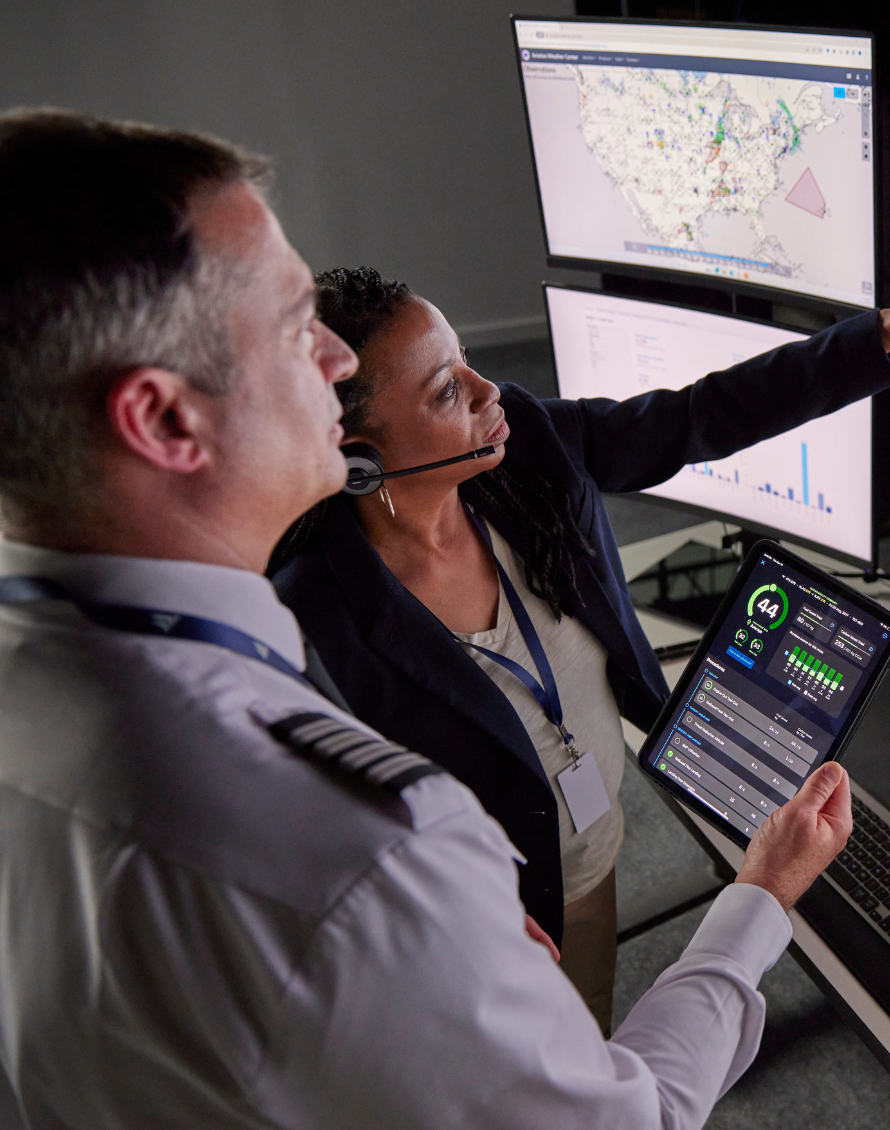In aviation, success is defined by the ability to adapt. Complex forces are reshaping modern flight operations, whether you're managing a fleet, overseeing maintenance, or ensuring regulatory compliance. In keeping up with the chaos, centralized and intelligent data systems are no longer a competitive advantage—they’re a requirement.
While aviation operations have already achieved significant improvements over the past 25 years, gains will depend on deeper, more sophisticated data analysis. Enter data democratization—where operational data is no longer confined to technical teams but is available to pilots, planners, and safety personnel alike. This shift enables proactive safety initiatives that cross traditional departmental boundaries, linking maintenance, fuel efficiency, compliance, and operations into a single, collaborative system.
Connecting data across multiple roles such as pilots, maintenance, or dispatch enables smarter, safer decision making,” says Luke Bowman, Sr. Product Director, Flight Analytics Portfolio at GE Aerospace, Software as a Service. “It’s all interrelated. The best airlines out there are enabling collaboration across functions, unifying their data, and working towards the same goals.”
Centralized, accurate, and accessible data is more than a best practice—it’s essential.
Here are four ways GE Aerospace, Software as a Service sees data democratization technology creating impact for the aviation industry, and how it can move your business into the future:

Anticipating regulatory shifts
In an industry governed by real-time decisions and growing complexity, pattern detection and anomaly identification are crucial. Implementing advanced, purpose-built technologies that can monitor and analyze flight data can help businesses take a proactive approach to safety.
These kinds of tools don’t just generate insights—they enable rapid and confident decision-making. By integrating multiple data sources into a unified, agnostic platform, organizations can break down organizational silos. The result? Pilots, dispatchers, maintenance planners, and compliance officers can work from the same source of truth—improving transparency, collaboration, and regulatory readiness.

Driving revenue through resilience
Adopting a disruption management platform can help organizations address these challenges head-on. By integrating live data—from flight schedules and crew rosters to maintenance systems and airport operations—into one decision-making environment, the platform creates a unified operational picture.
Moreover, using advanced analytics and machine learning, these kinds of platforms can proactively identify potential disruptions, suggest optimized recovery paths, and empower teams with pre-vetted solutions. Instead of reacting to issues manually, airlines can now operate with greater resilience—ensuring continuity, maximizing resource use, and safeguarding revenue streams.

Making faster decisions
Whether it's a commercial airline, an MRO provider, or a private jet operator, speed is critical. Assets must be maintained and returned to service quickly and safely.
Asset management tools can create order from operational chaos. By digitizing maintenance records, engineering updates, and audit documentation, teams can collaborate remotely and access critical information in real time. This also stands to support external stakeholders, such as parts brokers, who can use shared platforms to match disassembled components with verified documentation—accelerating inventory turnover and increasing resale value.
Ultimately, consolidating data isn’t just about efficiency. It’s about enabling faster, safer, and more confident decision-making at every level of the operation.

Closing the gap
This generational shift is not a challenge—it’s an opportunity. With AI-powered tools, knowledge from retiring experts can be embedded into troubleshooting systems, making it accessible to newer staff. Whether it's generating initial maintenance drafts, streamlining approvals, or automating engineering workflows, AI is quickly becoming an enabler of speed and scale.
The key is building user-centered solutions that integrate easily into existing operations. When digital tools are intuitive and agile, they not only support current workflows but adapt to changing business needs—maximizing value while minimizing disruption.
In the very near future, AI’s ability to unify data across legacy silos will lead to smarter predictive maintenance, reduced downtime, and data-driven decisions that elevate team performance across the board.

The path forward
By investing in intelligent systems built specifically for the aviation industry, leaders can empower their teams, protect their operations, and chart a clear course into the future.